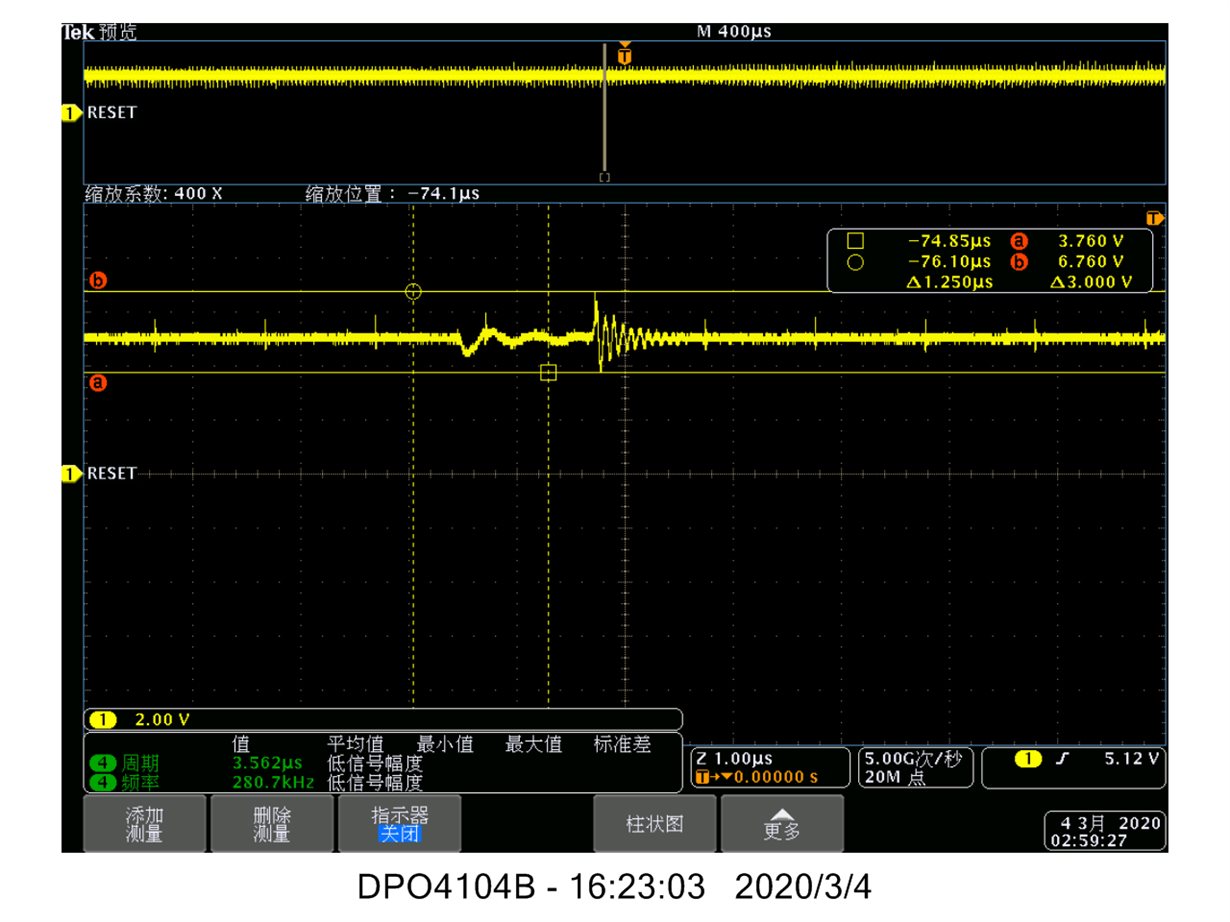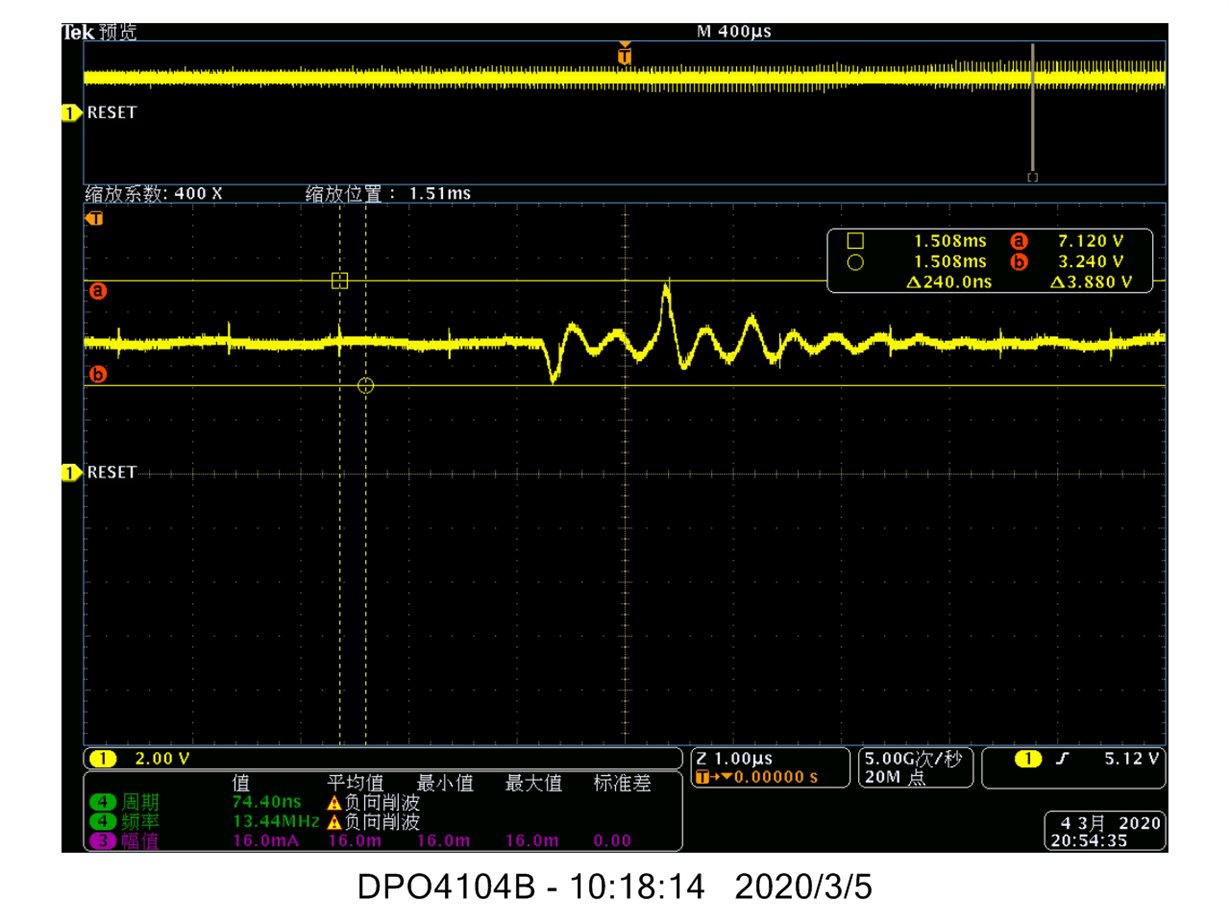For TPS61176 chip, the current EN pin voltage we use is about 1.7V (as shown in the red box below). Under this condition, when the output channel is > = 3 (the total output current is about 60mA), the problem of backlight flash caused by unstable output current is likely to occur (there is no flash problem for 40mA output).
When the EN pin voltage is increased to 1.8 ~ 3.3, the flicker will disappear. In the specification, the EN pin voltage is more than 1.2V. Please help to see if there are restrictions in other parts of the chip.Output current stability of TPS61176.pptx











